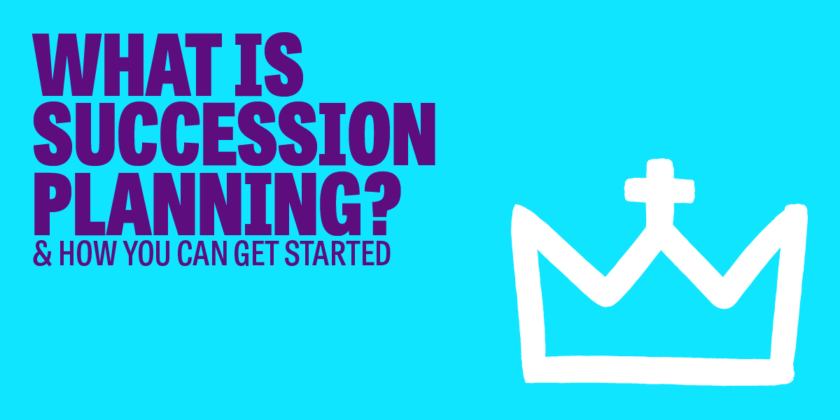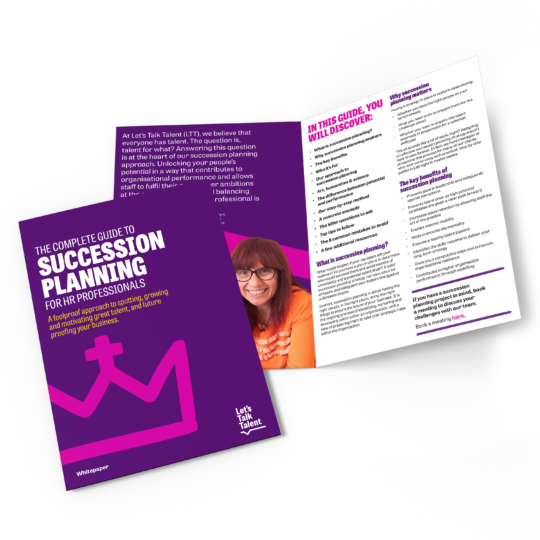Beginners Guide: How to future proof your organisation by having the right succession conversations
With the end of the year coming up, most organisations will be gearing up to conduct their employees’ annual reviews. Whilst feedback on performance is great, those meetings present an additional, and seldom used opportunity to go much further. Indeed, most managers will focus on employees’ performances within their current positions and not touch on development or future roles at all.
But what if you could use those conversations to further join the dots and ensure a comprehensive audit of what talent you have now and what you need for the future?
Succession planning aims to do just that. Often thought of as reserved for the c-suite to carry out the delivery of the business vision, it is in fact much broader. By allowing you to identify key high potential candidates, as well mapping out the pathway to help them step up to the plate, succession planning is a must in any company’s talent management toolkit.
Yet, when asked whether HRD’s are able to identify the future leaders of their businesses, only 42% of our Talent Diagnostic Survey respondents were confident they could. So why is succession planning still a struggle for organisations?

What is succession planning?
Put simply, it is about having the right people, in the right roles, doing the right things. How can you plan your long-term growth strategy without knowing who will be there to deliver it? So whilst most business leaders will be satisfied that critical roles are filled, those with succession planning in mind will think further and list out the traits, behaviours, and attributes needed for the organisation to thrive, as well as the employees that exhibit those traits. Because once you have identified your key people the important work begins. It’s not just about spotting future leaders: it’s also about giving them the tools they need to become rock stars.
Most of those candidates will probably come from your internal talent pool. But what if this long-term mapping exercise led you to discover some gaps in key areas? What if loosing employees became a threat to your business’ future? Growing internal talent is of paramount importance to ensure strategic continuity. But some may also discover that recruiting people outside the organisation to plug future gaps could become a necessary tool to ensure the right team is in place.
What are the benefits of succession planning?
This particular area of talent management is about future-proofing your organisation. But this may seem a bit vague for the time-poor leadership team, often focussed on immediate issues.
Therefore, it is worth considering the more tangible outcomes that can be seen from an effective strategy as the latter will help:
- Identifying future talent gaps at all business levels, allowing you to take action by coaching talent or recruiting new players;
- Support the creation of strategic, long-term development plans for high potential candidates;
- Develop a culture of employee empowerment and organisational innovation, making you a more attractive employer on the market;
- Promote staff mobility within various departments and locations, contributing to knowledge-sharing and giving employees a more attractive, fluid experience;
- Providing a more consistent experience for candidates, as succession planning allows you to join up all elements of you HR efforts, from recruitment to talent management and staff retention.
With benefits aplenty, why aren’t business owners diving in to develop their succession planning toolkits? Well the real-life implementation can be hard. It involves business leaders having open and honest, sometimes difficult conversations about employees’ career paths, performance and future goals. But understanding early on whether your current line-up will be able to take you all the way to the Championship will empower you to take the right steps towards ensuring you have the right people on your bench.
So how do you even get started with succession planning?
Well for those dipping their toes in for the first time, fear not. There are tools to help you map out the roadmap from initial audit all the way to the roll out of a succession planning strategy.
Our Premiership football club client, for example, began by launching a benchmarking survey on performance across its pool of employees, allowing the business to gain a clear understanding of their starting point and most urgent areas to address. They were then able to continue their journey by creating a Talent Management Philosophy and Succession Planning Toolkit, which were rolled out based on the survey data gathered.
There are also things you can do on a daily basis. Beth Clutterbuck, former VP Global Head of People at Deliveroo, talks about the Gutted List, a great way to identify your star players by asking yourself: ‘If this person told me they were leaving tomorrow, would I be gutted?’ This will allow you to understand who your high potential candidates are and have regular conversations on whether they have the right tools to succeed within your business. But overall, not getting bogged down with processes and policies that will end up in a drawer is key.
When it comes to succession planning, it’s all about actions and, more importantly, it’s about open and clear communication with your employees.
You might also be interested in:

